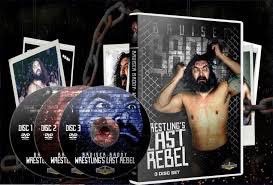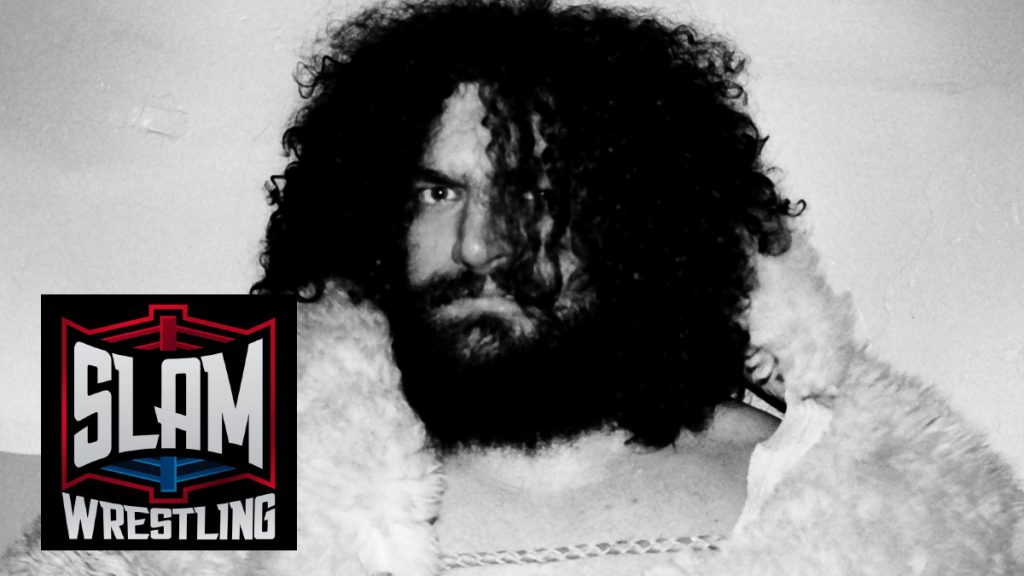Working both independently and as part of the team at Highspots.com, filmmaker Michael Elliott has tackled some of the thorniest topics from wrestling’s recent past. For his documentary on Jim Crockett Promotions, he chased down one of the only non-WWE produced on-camera interviews with Jim Crockett Jr., discussing his company’s history and the late 1980s wrestling war with Vince McMahon that drove it out of the wrestling business. For his documentary on Magnum TA (Terry Allen), he covered Allen’s can’t-miss career and the automobile accident that ended it in its prime.

Having these kinds of conversations with people isn’t easy, and as someone who has conducted my own share of interviews, I’m always impressed by the way Elliott approaches difficult topics. He has a knack for setting his subjects at ease. In documenting the stories of the people behind a sport that’s mostly allergic to subtlety, Elliott deploys a refreshingly light touch.
When I ask him about his method, he almost laughs off the question. “I don’t know,” he told SLAM! Wrestling. “I’ve done so many of these now that it’s just computerized in me to start going at them. You research, you research, and you research and you reach out to the right people and you build a relationship with them before you just say, ‘Hey, I want to stick this camera in your face.’ ”
He puts this light touch to fine use in his latest project, which takes as its subject Elliott’s most difficult topic, yet. In Wrestling’s Last Rebel he looks at the life and death of Bruiser Brody, a wrestler whose legend seems to grow larger each year. Remembered as much for how he died as how he lived, Brody’s story is rife with rumor, half truths, and out and out falsehoods. “He’s an important person in professional wrestling. Is he mainstream? No. Should he be? Yes. I think people needed to know who he really was and not just how his life ended,” said Elliott.
To sort it out, Elliott goes directly to the people who knew Brody best, the people who were present on the evening Brody died in 1988, and the wrestlers who worked with him most frequently. The film contains new interviews with wrestlers Tony Atlas, Tim Brooks, Stan Hansen, journalist Dave Meltzer, and writer Emerson Murray, the author of a deeply researched biography of Brody released by Crowbar Press.
Elliott also conducted long interviews with Barbara Goodish, Brody’s wife, and Brody’s close friend Larry Matysik (who worked with Barbara on her book on her late husband). To supplement the new footage, he includes clips from interviews with Gary Hart, Ric Flair, and Dutch Mantel, taken from the extensive Highspots library of shoot interviews. “I approached [the film] like I approached all of them,” Elliott told me, “going in to tell the true story and not keep anything out of it and let people watch and decide for themselves.”
Elliott’s film considers Brody as a father, a wrestler, a husband, and a businessman. He balances delicate moments, and moments where stories conflict, by trying to convey multiple sides. What, if anything, happened between Brody and Lex Luger after Luger seemed to run away during a now infamous match against Brody, is a relatively mundane matter in the scheme of things. Still, it couldn’t have been easy to try and pin Luger down to an answer. “I don’t know what’s going on in Brody’s head,” Luger tells Elliott. “He’s in there with tape around all his fingertips with razor blades on ’em, staring at me. And I’m like, I literally … you know the cage is supposed to keep us in. When Gordon [the ring attendant] couldn’t get the door open, like a scared rabbit I jumped up on the ropes and climbed out of the cage and went back to the locker room.”
Not mundane in the least is the matter of how different wrestlers acted as Brody lay slowly dying on the floor of a locker room in Puerto Rico. Tony Atlas is one of the few wrestlers who were in the locker room who has been willing to speak on the record about the evening since it first occurred.
Elliott captures a revealing interview with an animated Atlas; “This is when I really learned what pro wrestling was all about,” says Atlas in the film. “This is where I learned all about wrestling. The [paramedic] turned to the wrestlers and said these words; ‘Can one of you all help? He’s heavy, we can’t lift him into the ambulance.’ The wrestlers, they turned their backs and started acting like they were lacing up their boots.”
The two discs of extras include unedited video of the legendary 1983 match between Ric Flair and Brody in St. Louis, Brody’s steel cage match with Lex Luger in Florida, as well as matches with Chris Adams, Wahoo McDaniel, Nick Bockwinkel, and maybe most notably, David Von Erich. If you haven’t seen a Brody match in a while, you can almost forget how physically large he really was. In a St Louis match with a young Ted DiBiase, Brody looks to be almost twice DiBiase’s size. In his match with Ric Flair, when Brody bounces off of the ring ropes and you see how far they sag as they adjust to his weight, you wonder how they aren’t ripped out of the turnbuckles.
The variety of footage included gives a great sense of Brody’s versatility, from his more purely physical and wild matches to his ability to engage in longer, slower matches with varying paces. “All he wanted to do,” remembers Barbara Goodish in the film, “[was] give the fans the best night of their life.”
Barbara Goodish and Michael Elliott.
The film also includes some fantastic photographs of Brody, some taken from Barbara Goodish’s personal collection. There’s Brody in a short sleeve button down and tie as a young sportswriter on the San Antonio Express News, and an adult Brody playing with his son. “You see the progression of his career,” said Elliott. “You really get to know who he was. Even asking his wife out for a date, he didn’t know how to do it. He was a big badass wrestler but he wasn’t like that outside of the ring. He had to have all these guys leave just so he could be alone with her.”
Barbara Goodish also narrates the film and as part of the bonus material, she goes through the contents of the suitcase Brody carried with him to all of his matches, the suitcase Bobby Jaggers claims to have hidden in the ventilation system of his hotel room on the evening of Brody’s death to prevent its theft. “Without [Barbara], this film wouldn’t have been anything. She was the star. She made everything happen.”
Wrestling’s Last Rebel is Elliott’s ninth film on wrestling. Besides his films on the Crockett family and Magnum TA, he’s directed documentaries on the Funks, Ivan Koloff, and Jimmy Valiant. Most are available on the Highspots.com subscription network, and Elliott produces other original content for the site, as well, including the “Legends of Extreme” series. “It’s a dream job,” said Elliott, “and I’m loving it and I hope the people are loving what we’re putting out.”
RELATED LINK

